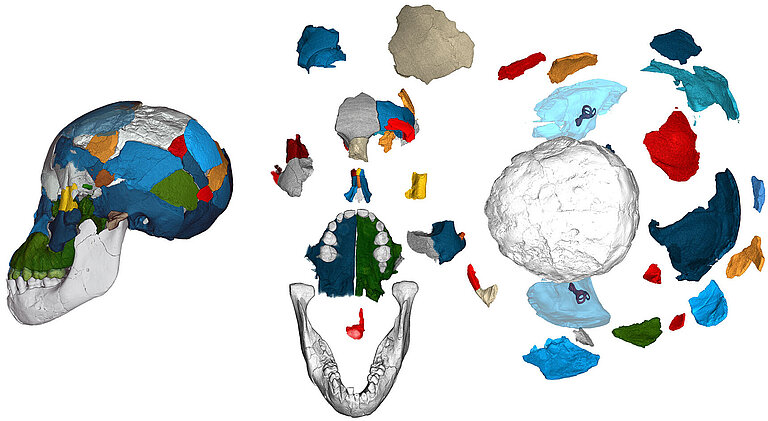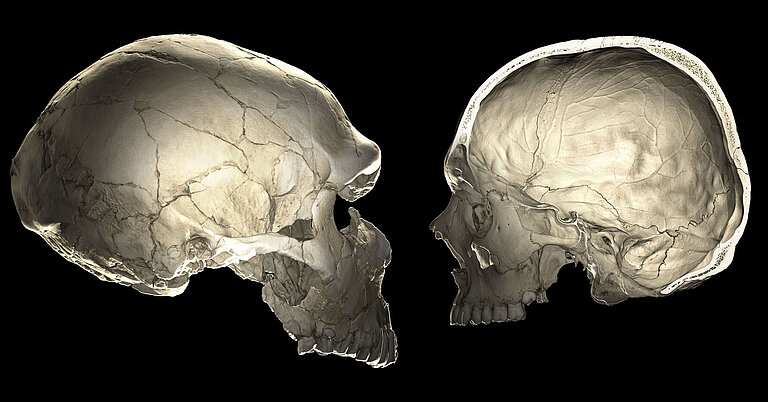Cranial Evolution and Development

Description
We investigate developmental and evolutionary shape change in primates — both living and fossil. We study the evolution of facial features, brain development, tooth shape, and the bony labyrinth. Our aim is to understand how organisms are shaped by evolutionary changes to developmental patterns.
As fossils are usually found broken into many pieces, and only partially complete, our work initially requires virtual reconstruction of fossils using computed tomographic scans. Our ongoing efforts are focused on enhancing techniques for fossil reconstruction and the statistical analysis of shape — a set of methods called “geometric morphometrics“. We integrate recent advances in genetics, µCT and MR imaging of bones and soft tissues with geometric morphometrics for phenotyping thousands of individuals.
One key research focus is the evolution of the brain and its endocranial imprint within the skull. Changes in endocranial shape observed in the hominin lineage may indicate evolutionary changes in brain organization. However, brain tissues do not fossilize, making it difficult to study the underlying biology. We address this challenge through an interdisciplinary approach that integrates the analyses of fossil skulls, ancient genomics, brain imaging and gene expression.

To begin unraveling the relationship between genotype and phenotype in extant primates and ancient hominins, we explore the correlation between variations in gene regulation and facial growth phenotypes in extant primates. We study macroscopic shape changes during development, microscopic analyses of bone remodeling, and spatial transcriptomics.
Staff
Associated students




